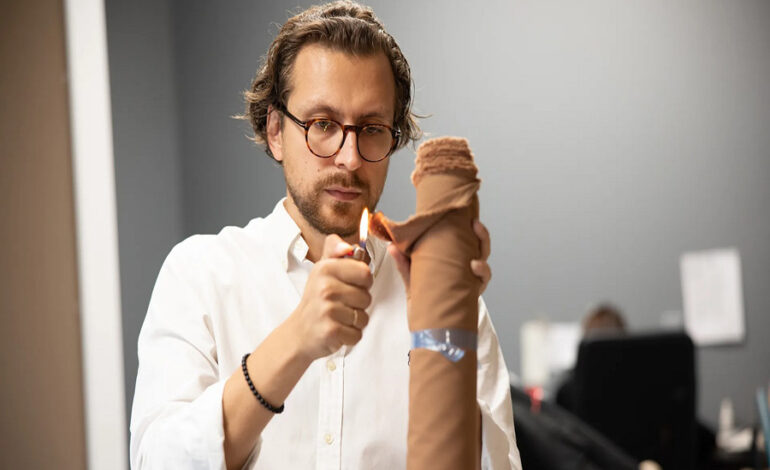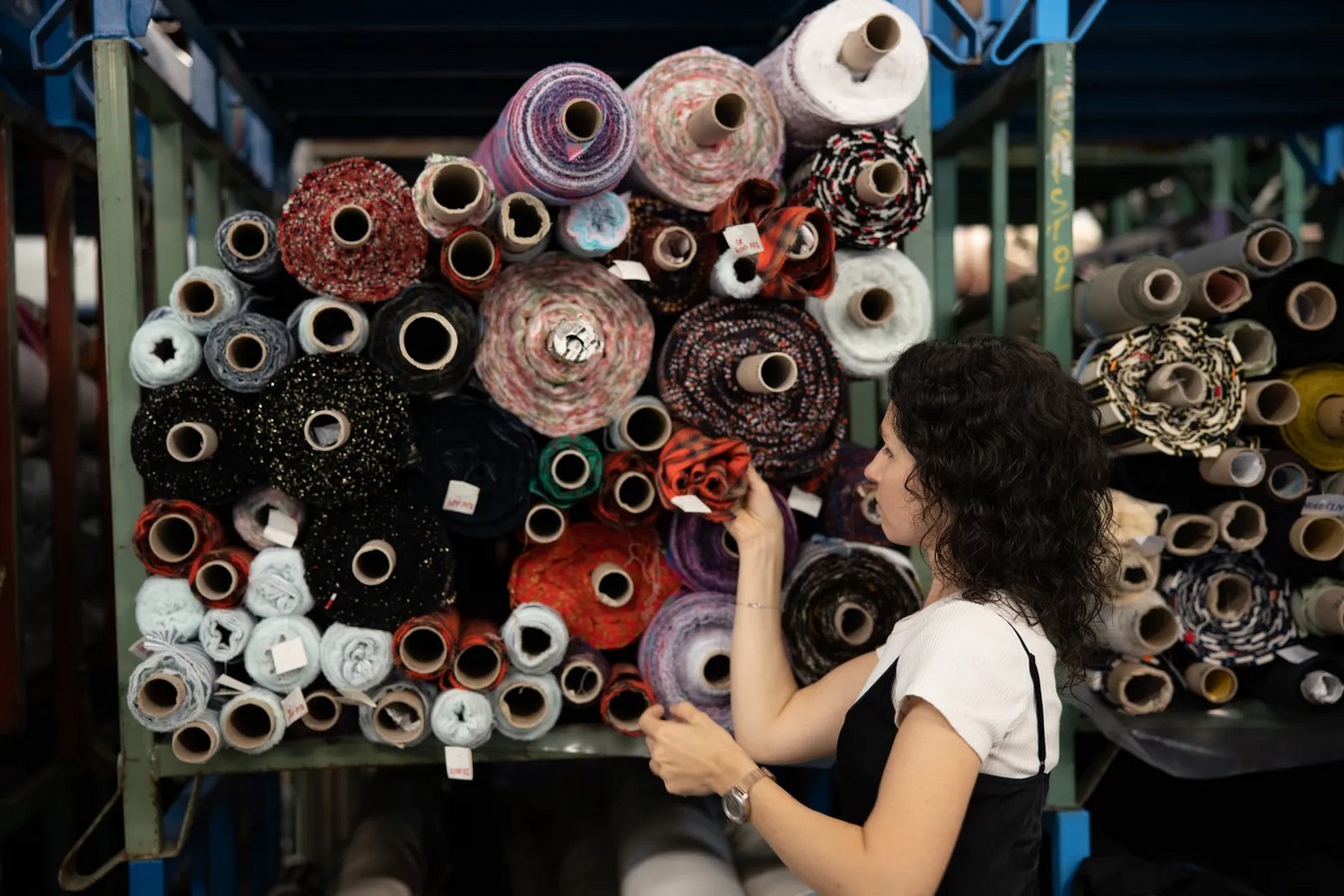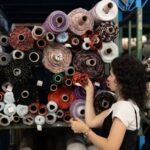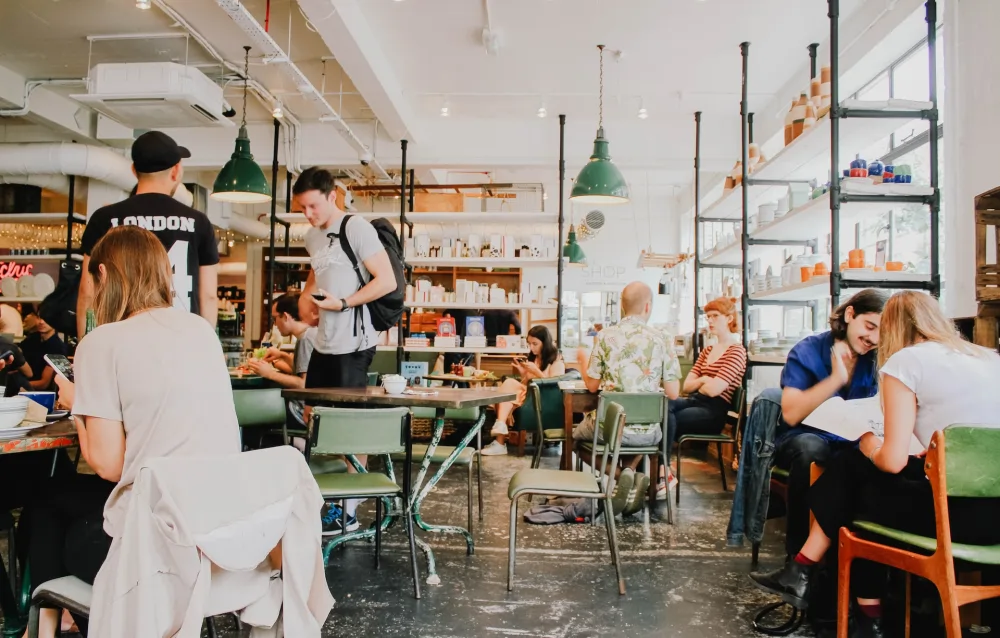Unveiling the World of Deadstock Fabric Inside Beglarian Fabrics

In a nondescript warehouse office outside Lyon, France, Karen Beglarian, a deadstock fabric supplier, shares insights into the intricate world of fabric detection. Holding a cigarette lighter in one hand and a piece of fabric in the other, Beglarian demonstrates a unique method for identifying fabric composition. With a flick of the lighter, he burns a small piece of fabric, observing its reaction to determine its composition—viscose, polyester, or silk—based on factors like texture, smell, and behavior when burned. This meticulous detective work is just one aspect of Beglarian Fabrics’ daily operations, ensuring the authenticity and quality of the unlabeled rolls of deadstock fabric acquired from luxury mills and designers.

Karen and his wife, Elena, embarked on their journey into the world of deadstock fabrics after relocating from Russia to France in 2013. Over the years, they’ve built a dedicated following of deadstock enthusiasts while significantly reducing waste through their business endeavors.
Amidst growing concerns about sustainability in the fashion industry, deadstock has emerged as a sought-after alternative for progressive designers and environmentally conscious consumers. Brands like Bode, Mfpen, and Eckhaus Latta have championed the repurposing of scraps into limited-edition pieces, elevating deadstock fabric from waste to coveted material. However, despite its rising popularity, the true extent of available deadstock remains largely unknown, with no official industry definition to quantify its prevalence.
According to Stephanie Benedetto, CEO of deadstock inventory platform Queen of Raw, a staggering 15% of fabric produced annually goes unsold, resulting in billions of dollars worth of excess inventory. Without repurposing, this surplus fabric often ends up incinerated or in landfills. Companies like Beglarian Fabrics play a crucial role in bridging the gap between excess supply and designer demand, meticulously curating and identifying deadstock fabrics for resale.

Each day, trucks deliver new fabric arrivals to the Beglarians’ warehouse, where rolls of fabric from renowned mills and designer brands are unloaded and inspected. The process involves scanning for defects and anomalies, with occasional discoveries of hidden treasures amidst the rolls of fabric. From exquisite French tweeds to gold embroidery and rare animal skins, the warehouse holds a treasure trove of unique finds, each with its own story.
For Karen and Elena, the journey into the fashion world has been one of perseverance and dedication. Starting from humble beginnings, they’ve navigated the complexities of the industry, establishing relationships with suppliers and clients alike. With meticulous attention to detail, they ensure that every piece of deadstock fabric finds its rightful place, preserving its value and sustainability credentials.
As the demand for sustainable fashion continues to rise, companies like Beglarian Fabrics are at the forefront of a movement towards a more ethical and environmentally conscious industry. Through their commitment to quality and authenticity, they’re reshaping the narrative around deadstock fabric, transforming it from overlooked surplus to a coveted resource in the fashion landscape.









